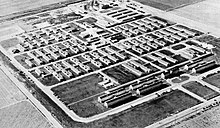
Tetraplegia, also known as quadriplegia, is defined as the dysfunction or loss of motor and/or sensory function in the cervical area of the spinal cord. A loss of motor function can present as either weakness or paralysis leading to partial or total loss of function in the arms, legs, trunk, and pelvis; paraplegia is similar but affects the thoracic, lumbar, and sacral segments of the spinal cord and arm function is spared. The paralysis may be flaccid or spastic. A loss of sensory function can present as an impairment or complete inability to sense light touch, pressure, heat, pinprick/pain, and proprioception. In these types of spinal cord injury, it is common to have a loss of both sensation and motor control.
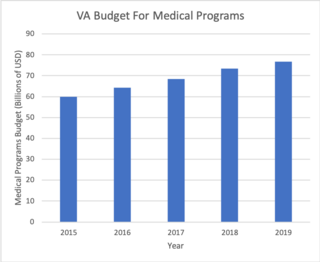
The Veterans Health Administration (VHA) is the component of the United States Department of Veterans Affairs (VA) led by the Under Secretary of Veterans Affairs for Health that implements the healthcare program of the VA through a nationalized healthcare service in the United States, providing healthcare and healthcare-adjacent services to veterans through the administration and operation of 146 VA Medical Centers (VAMC) with integrated outpatient clinics, 772 Community Based Outpatient Clinics (CBOC), and 134 VA Community Living Centers Programs. It is the largest division in the department, and second largest in the entire federal government, employing over 350,000 employees. All VA hospitals, clinics and medical centers are owned by and operated by the Department of Veterans Affairs, and all of the staff employed in VA hospitals are federal employees. Because of this, veterans that qualify for VHA healthcare do not pay premiums or deductibles for their healthcare but may have to make copayments depending on the medical procedure. VHA is not a part of the US Department of Defense Military Health System.
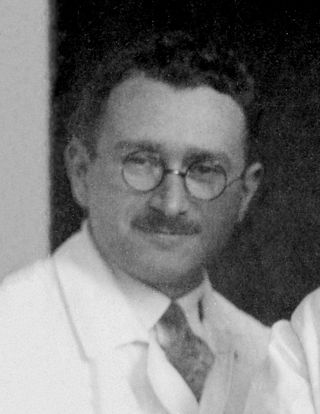
Sir Ludwig Guttmann was a German-British neurologist who established the Stoke Mandeville Games, the sporting event for people with disabilities (PWD) that evolved in England into the Paralympic Games. A Jewish doctor who fled Nazi Germany just before the start of the Second World War, Guttmann was a founding father of organized physical activities for people with disabilities.
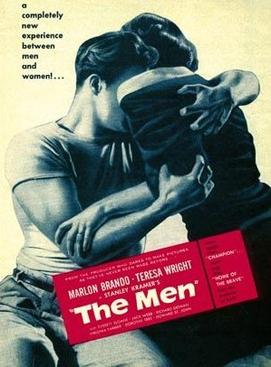
The Men is a 1950 American drama film. Set mostly in a paraplegic ward of a VA hospital, the film stars Marlon Brando as an ex-GI named Ken who as a result of a war wound is paralyzed and uses a wheelchair. Suffering depression and impaired self-concept, Ken struggles to accept his disability and his need to accept care from others, including from his fiancée/wife.

The Dwight D. Eisenhower Army Medical Center (EAMC) is a 93-bed medical treatment facility located on Fort Eisenhower, GA, located near Augusta, Georgia that previously served as the headquarters of the Army's Southeast Regional Medical Command (SERMC). SERMC oversaw the Army's hospitals and clinics within the southeastern United States and Puerto Rico. SERMC was renamed Southern Regional Medical Command (SRMC) and was relocated to San Antonio in 2009.

Shriners Children's is a network of non-profit medical facilities across North America. Children with orthopaedic conditions, burns, spinal cord injuries, and cleft lip and palate are eligible for care and receive all services in a family-centered environment, regardless of the patients' ability to pay. Care for children is usually provided until age 18, although in some cases, it may be extended to age 21.

A standing frame is assistive technology that can be used by a person who relies on a wheelchair for mobility. A standing frame provides alternative positioning to sitting in a wheelchair by supporting the person in the standing position.
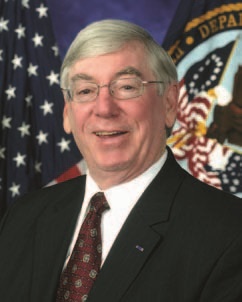
Gordon Hall Mansfield was an American military veteran who was Deputy Secretary of Veterans Affairs between 2004 and 2008.

Rancho Los Amigos National Rehabilitation Center is a rehabilitation hospital located in Downey, California, United States. Its name in Spanish means 'Friends' Ranch'.

The Shirley Ryan AbilityLab, formerly the Rehabilitation Institute of Chicago (RIC), is a not-for-profit nationally ranked physical medicine and rehabilitation research hospital based in Chicago, Illinois. Founded in 1954, the AbilityLab is designed for patient care, education, and research in physical medicine and rehabilitation (PM&R). The AbilityLab specializes in rehabilitation for adults and children with the most severe, complex conditions ranging from traumatic brain and spinal cord injury to stroke, amputation and cancer-related impairment. Affiliated with Northwestern University, the hospital is located on Northwestern’s Chicago campus and partners on research and medical efforts.
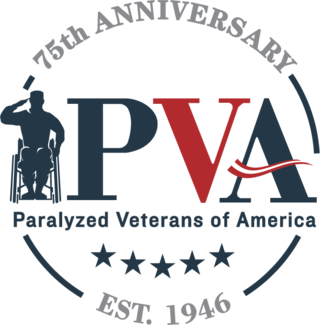
The Paralyzed Veterans of America was established in 1946 to serve the needs of disabled veterans. The organization was created to allow its members, veterans of the armed forces living with spinal cord injuries or diseases like multiple sclerosis (MS) and amyotrophic lateral sclerosis (ALS), to live with independence, dignity, and as productive members of society.
Jonathan Shay is an American doctor and clinical psychiatrist. He holds a B.A. from Harvard (1963), and an M.D. (1971) and a Ph.D. (1972) from the University of Pennsylvania. He is best known for his publications comparing the experiences of Vietnam veterans with the descriptions of war and homecoming in Homer's Iliad and Odyssey.
Ernest Herman Joseph Bors, MD was a Czech-born American physician. He was a pioneer in the multidisciplinary care of individuals with spinal cord injury (SCI).

United Spinal Association is a nonprofit membership, disability rights and veterans service organization in the United States. It was formed in 1946 as Eastern Paralyzed Veterans Association by a group of paralyzed World War II veterans from New York City.
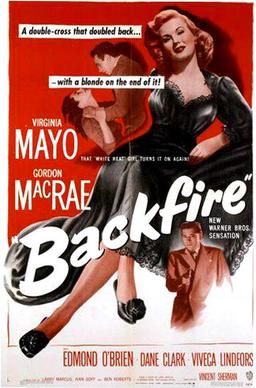
Backfire is a 1950 American film noir crime film directed by Vincent Sherman starring Edmond O'Brien, Virginia Mayo, Gordon MacRae, Viveca Lindfors and Dane Clark.

Burke Rehabilitation Hospital is a non-profit, 150-bed acute rehabilitation hospital located in White Plains, New York. It is the only hospital in Westchester County entirely dedicated to rehabilitation medicine. Opening in 1915, Burke has been involved in medical rehabilitation for over one hundred years. As of January 2016, Burke is a member of the Montefiore Health System, Inc.
Henry Patrick Birmingham was a surgeon and an American brigadier general active during World War I.

The James J. Peters VA Medical Center,, is a US Department of Veterans Affairs hospital complex located at 130 West Kingsbridge Road in West Fordham, Bronx, New York City. The hospital is the headquarters of the Veterans Integrated Service Networks New York/New Jersey VA Health Care Network. This network is also the parent network to VA New York Harbor Healthcare System.

California during World War II was a major contributor to the World War II effort. California's long Pacific Ocean coastline provided the support needed for the Pacific War. California also supported the war in Europe. After the Japanese attack on Pearl Harbor on December 7, 1941, most of California's manufacturing was shifted to the war effort. California became a major ship builder and aircraft manufacturer. Existing military installations were enlarged and many new ones were built. California trained many of the troops before their oversea deployment. Over 800,000 Californians served in the United States Armed Forces. California agriculture, ranches and farms were used to feed the troops around the world. California's long coastline also put the state in fear, as an attack on California seemed likely. California was used for the temporary and permanent internment camps for Japanese Americans. The population grew significantly, largely due to servicemen who were stationed at the new military bases/training facilities and the mass influx of workers from around the U.S. in the growing defense industries. With all the new economy activity, California was lifted out of the Great Depression. Over 500,000 people moved to California from other states to work in the growing economy. California expanded its oil and mineral production to keep up with the war demand.

VA Long Beach Healthcare System, former Naval Hospital Long Beach is a large medical treatment facility in Long Beach, California. The Veterans Administration Hospital operates the hospital on 100 acres of land at 5901 E 7th St, Long Beach. The hospital has primary care, tertiary care, and long-term care in areas of medicine, surgery, psychiatry, physical medicine and rehabilitation, neurology, oncology, dentistry, spinal cord injury, geriatrics, blind rehabilitation and extended care. The VA Hospital opened on June 1, 1950.



